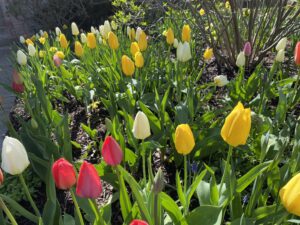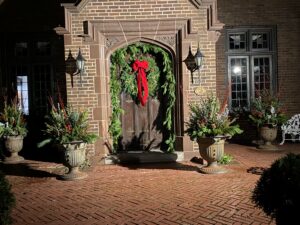Fall Bulbs:
 Nothing adds excitement to your spring landscape like a colorful blend of bulbs. Tulips, hyacinth and daffodils all require planting in the fall so they stay cool throughout the winter season and bloom in the spring.
Nothing adds excitement to your spring landscape like a colorful blend of bulbs. Tulips, hyacinth and daffodils all require planting in the fall so they stay cool throughout the winter season and bloom in the spring.
Irrigation Tips:
Schedule the winterization and shut down of your sprinkler system.
Landscape Lighting:
If you currently have a system in place, make sure that all the lights are in proper working order before the winter months.

Winter Interest and Decor: Schedule holiday greens for containers to help create welcoming entrances and focal points to your home. Garlands and wreaths also make for an inviting welcome for guests.
Dormant Pruning:
Call to schedule dormant pruning for your trees and shrubs to improve tree/shrub health and structure. Pruning also maintains the size and natural form of trees, while extending their useful life.
Winter Mulching:
Winter mulching reduces frost heave and freeze damage, delays the early emergence of bulbs and perennials, insulates perennials from harsh, cold winters and improves soil nutrients.

Tree Wrap:
Newly planted trees should be wrapped for at least two winters and thin-barked species up to five winters or more. Protect multi-stemmed evergreen trees from storm damage by tying trunks with nylon of twine. Make sure to remove these items when warmer weather emerges.
Transfilm:
Transfilm is an anti-desiccant that effectively reduces the water loss of plants. Coating the leaves with a thin film of Transfilm can provide a water impermeable barrier that reduces the water loss from transpiration.